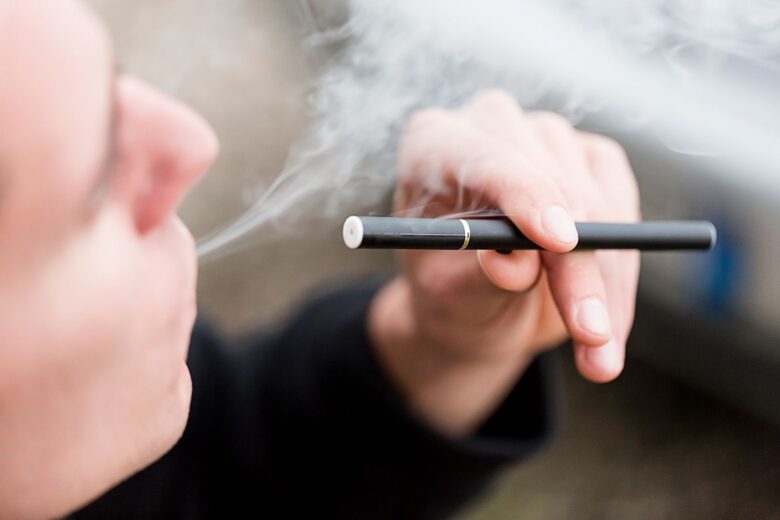Vaping and the use of e-cigarettes, though a controversial topic in recent years, has proved itself as a viable alternative to cigarettes. As a method to quit smoking, there are few better products on the market, and even if you choose to buy a vape simply for enjoyment, most medical authorities agree that vaping is considerably less harmful than smoking.
Though they are, however, still bad for you, they present more benefits of use in comparison to cigarettes. Because of this, if you’re new to vaping or considering starting, it’s best to develop an understanding of how your pen will work.
Doing so will help you understand which product to choose and help you troubleshoot your device to prevent malfunction.
How a Vape Works

Although they come in many shapes, sizes and flavors, all vapes, whether disposable or non-disposable, usually contain the same components. To simulate smoking, through a vapor that contains nicotine, among other chemicals, vapes consist of the following parts:
- Battery: Put simply, the battery provides the power needed to turn the liquid in the vape into a vapor. Plenty of different battery types are available on the market, including built-in and rechargeable variations you can buy separately and swap out as you please.
All you really need to know here is that the higher the wattage of the battery, the more vapor is produced by the vape.
- Atomizers: The atomizer is the coil responsible for heating the liquid in the pen. Typically, they are placed inside the vape tank, which is designed to simultaneously allow vapor to pass through while preventing the poisonous, if swallowed, liquid from leaking.
- Sensors: These ingenious and relatively small components in vapes often go unnoticed. The sensor’s job is to detect when a user takes a puff from the pen. They do this by detecting and reacting to increases and decreases in air pressure during inhales and exhales.
- Logic boards and firmware: Essentially, a vape is a mini-computer, and the logic boards and firmware inside of them is the closest thing you’ll see to a typical computing component.
Firmware and integrated circuits on the motherboard in vapes are mostly in charge of protecting the user through safety systems. These typically aim to prevent overheating caused by overly long puffs and overcharging, for example.
Though this is only a brief breakdown of how vapes are assembled, you can immediately see how complex they actually are.
With the popularity of vapes this complexity will only increase as companies innovate to keep up with an all-time high customer demand. And to avoid making things even more complicated, we’ll avoid mentioning products which use alternatives to nicotine liquid, like THCa vapes, which are also available in all shapes and sizes.
4 Different Types of Vapes

If you’re looking to pick up a vape to wean yourself off cigarettes, or even if you just want to vape, there are loads of options and brands available. Your choice will depend on a variety of personal factors, including your smoking preferences and overall lifestyle. Four of the most popular styles of pen are:
1. Disposable Vapes
Due to their incredible ease of use, disposable vapes have taken the world by storm in recent years. They require no setup, coming ready to go out of the box, pre-filled and pre-charged.
Though some do include a button, disposable vapes are always puff-activated, meaning that the coil is refreshed with more juice between use and will continue to work until either the battery dies, the wick dries up, or the pen runs out of liquid.
These vapes are often seen as entry-level because their convenience and inexpensiveness allow smokers to try out vaping before buying an expensive model.
2. Pod Vapes

Pod vapes, or in general vape pens, are very similar to disposable vapes, though they have greater longevity. They are puff-activated like their disposable counterparts but require a little more maintenance, from charging the battery to topping up liquids. However, the most you’ll have to do is occasionally replace the tank and oil.
Pod vapes offer flexibility, allowing users to try different flavors and liquid strengths without buying a new pen.
3. Vape Mods
Mods are popular among the more experienced vapers and are the most complex and powerful of the bunch. These come with a range of more advanced features, which vary from brand to brand. Some examples of these include temperature and airflow control, as well as adjustable wattage.
4. Nicotine-Free Vapes

Finally comes the nicotine-free vape, and expect to see these become more popular in the coming year considering that plenty of governments around the world are readjusting regulations surrounding electronic cigarettes.
As the name suggests these basically act the same as other types of vape, but their liquid contains no nicotine, making them, in theory, non-addictive. Most of the major vaping brands now offer nicotine-free options, and the options will probably expand soon.
Brands will alter each of these models accordingly to cater best to their customers. This customizability is part of the reason vaping is such an excellent anti-smoking measure. There is ample opportunity to find something suited to you, so make sure you shop around before you make a decision.
Final Thoughts
Vaping has seemingly taken over the world and has caused lots of controversy in doing so, but don’t let this deter you from using one to try and stop smoking. Keep in mind though that the future of vaping is uncertain and in 2024 we’ll see a lot of changes in the retailing and production of e-cigarettes, with the biggest concern being how governments can deter underage users from acquiring these products.
Despite this, however, adults worldwide have used vaping to save money and improve their health by avoiding cigarettes. Despite years of research in the industry, you’ll struggle to find an anti-smoking device with this amount of popularity and effectiveness.
Alternatively, if you are an experienced vaper, and are looking for more ways to get the most out of your device, here are five ideas to help maximize the experience.

